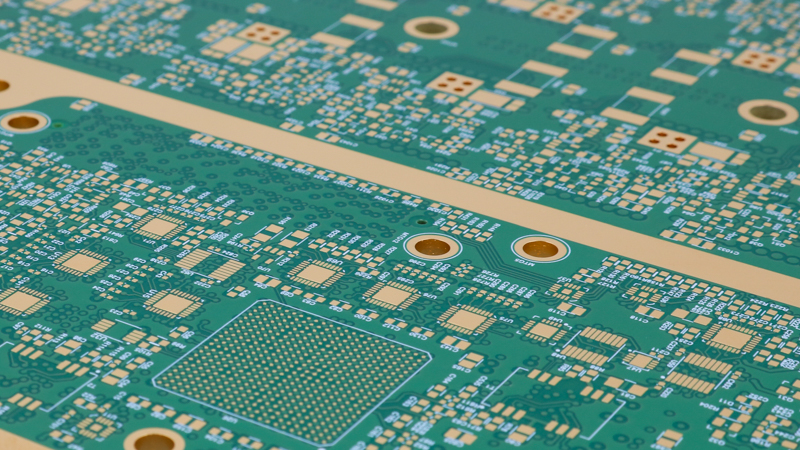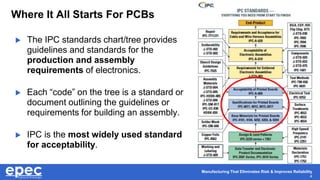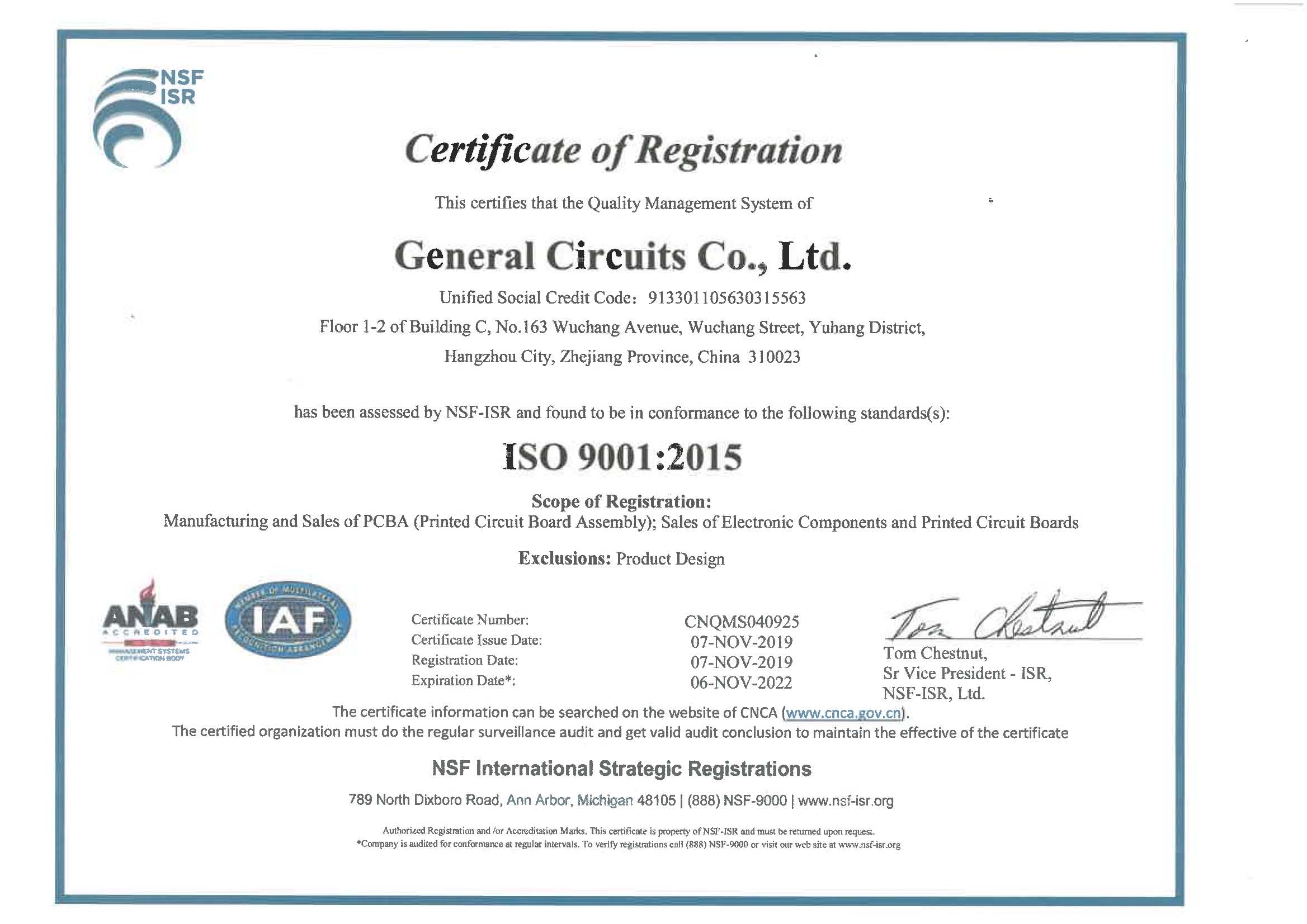Why Compliance is Crucial for Electronics Startups
For electronics startups, navigating the complex world of PCB regulations can be a daunting task. However, ensuring compliance with relevant certifications and standards is crucial for success in the industry. PCB certification and compliance startups must prioritize regulatory adherence to avoid costly fines, reputational damage, and even business closure. Non-compliance can result in significant financial losses, damage to brand reputation, and loss of customer trust.
In contrast, ensuring compliance can bring numerous benefits, including increased customer confidence, improved product quality, and enhanced competitiveness in the market. By prioritizing compliance, electronics startups can demonstrate their commitment to quality, safety, and environmental responsibility, ultimately driving business growth and success.
Moreover, compliance with PCB regulations can also help startups to expand their market reach. Many countries have strict regulations and standards for electronic products, and compliance with these regulations can open up new markets and opportunities for growth. For instance, compliance with the European Union’s RoHS (Restriction of Hazardous Substances) directive can enable startups to sell their products in the European market.
Furthermore, compliance can also help startups to reduce their environmental footprint. Many PCB regulations, such as the RoHS directive, aim to reduce the use of hazardous substances in electronic products. By complying with these regulations, startups can demonstrate their commitment to environmental responsibility and sustainability.
In summary, compliance with PCB regulations is essential for electronics startups. By prioritizing compliance, startups can avoid costly fines, reputational damage, and business closure, while also increasing customer confidence, improving product quality, and enhancing competitiveness in the market.
Understanding the Key Certifications and Standards
For electronics startups, navigating the complex world of PCB certification and compliance can be overwhelming. However, understanding the key certifications and standards that apply to PCBs is crucial for ensuring regulatory adherence and avoiding costly fines or product recalls. In this section, we will delve into the main certifications and standards that apply to PCBs, including UL, CE, and RoHS.
UL (Underwriters Laboratories) certification is a critical standard for PCBs, particularly in the United States. UL certification ensures that PCBs meet specific safety standards for electrical and fire safety. To obtain UL certification, PCB manufacturers must undergo rigorous testing and inspection to ensure compliance with UL standards.
CE (Conformité Européene) marking is a mandatory certification for PCBs sold in the European Union. The CE marking indicates that a PCB complies with EU health, safety, and environmental protection standards. To obtain CE marking, PCB manufacturers must conduct a self-certification process, which involves testing and documentation to demonstrate compliance with EU regulations.
RoHS (Restriction of Hazardous Substances) is a critical standard for PCBs, particularly in the European Union. RoHS restricts the use of hazardous substances such as lead, mercury, and cadmium in PCBs. To comply with RoHS, PCB manufacturers must ensure that their products do not contain these restricted substances.
In addition to these certifications, PCB manufacturers must also comply with other standards and regulations, such as IPC (Institute for Printed Circuits) standards and ISO (International Organization for Standardization) standards. IPC standards provide guidelines for PCB design, manufacturing, and testing, while ISO standards provide guidelines for quality management and environmental management.
By understanding these key certifications and standards, electronics startups can ensure that their PCBs meet regulatory requirements and avoid costly fines or product recalls. Moreover, compliance with these standards can also enhance the reputation and credibility of startups in the industry.
How to Ensure Compliance in Your PCB Design Process
Ensuring compliance in the PCB design process is crucial for electronics startups to avoid costly fines, product recalls, and damage to their reputation. By incorporating design for manufacturability (DFM) and design for testability (DFT) into the design process, startups can ensure that their PCBs meet regulatory requirements and are manufactured efficiently. In this section, we will provide practical tips and best practices for ensuring compliance in the PCB design process.
Design for Manufacturability (DFM) is a critical aspect of the PCB design process. DFM involves designing the PCB with manufacturing considerations in mind, such as the use of standard components, minimal layer count, and optimal routing. By incorporating DFM into the design process, startups can ensure that their PCBs are manufactured efficiently and with minimal errors.
Design for Testability (DFT) is another essential aspect of the PCB design process. DFT involves designing the PCB with testing considerations in mind, such as the use of test points, minimal component density, and optimal routing. By incorporating DFT into the design process, startups can ensure that their PCBs are tested efficiently and with minimal errors.
Best practices for ensuring compliance in the PCB design process include:
- Using PCB design software that is compliant with regulatory requirements, such as UL and CE marking.
- Incorporating DFM and DFT into the design process to ensure efficient manufacturing and testing.
- Using standard components and minimal layer count to reduce manufacturing complexity.
- Optimizing routing to minimize errors and ensure efficient testing.
- Conducting regular design reviews to ensure compliance with regulatory requirements.
By following these best practices, electronics startups can ensure that their PCBs meet regulatory requirements and are manufactured efficiently. Moreover, compliance with regulatory requirements can also enhance the reputation and credibility of startups in the industry.
In addition to incorporating DFM and DFT into the design process, startups should also consider the following PCB certification and compliance startups’ best practices:
- Using a PCB design checklist to ensure compliance with regulatory requirements.
- Conducting regular training and education programs for design engineers to ensure they are aware of regulatory requirements.
- Establishing a quality management system to ensure ongoing monitoring and improvement of the design process.
By incorporating these best practices into the PCB design process, electronics startups can ensure that their PCBs meet regulatory requirements and are manufactured efficiently, ultimately reducing the risk of costly fines, product recalls, and damage to their reputation.
The Role of Material Selection in PCB Compliance
Material selection plays a critical role in ensuring PCB compliance with regulatory requirements. The use of compliant materials and the avoidance of restricted substances are essential for electronics startups to ensure that their PCBs meet regulatory standards. In this section, we will discuss the importance of material selection in PCB compliance and provide guidance on selecting compliant materials.
The use of restricted substances in PCBs is a major concern for regulatory bodies. Substances such as lead, mercury, and cadmium are restricted under regulations such as RoHS and WEEE. Electronics startups must ensure that their PCBs do not contain these restricted substances to avoid non-compliance. To achieve this, startups must select materials that are compliant with regulatory requirements.
Compliant materials for PCBs include:
- Lead-free solder
- Halogen-free laminates
- RoHS-compliant components
When selecting materials for PCBs, electronics startups must consider the following factors:
- Regulatory requirements: Ensure that the materials selected meet regulatory requirements such as RoHS and WEEE.
- Performance: Ensure that the materials selected meet the performance requirements of the PCB.
- Cost: Ensure that the materials selected are cost-effective and do not compromise the overall cost of the PCB.
Best practices for material selection in PCB compliance include:
- Conducting thorough research on materials to ensure compliance with regulatory requirements.
- Working with suppliers who provide compliant materials.
- Implementing a material selection process that ensures compliance with regulatory requirements.
By selecting compliant materials, electronics startups can ensure that their PCBs meet regulatory requirements and avoid non-compliance. Moreover, the use of compliant materials can also enhance the reputation and credibility of startups in the industry.
In addition to selecting compliant materials, electronics startups must also ensure that their PCBs are manufactured using compliant manufacturing processes. This includes ensuring that the manufacturing process does not involve the use of restricted substances and that the process meets regulatory requirements.
By combining compliant material selection with compliant manufacturing processes, electronics startups can ensure that their PCBs meet regulatory requirements and are manufactured efficiently, ultimately reducing the risk of costly fines, product recalls, and damage to their reputation.
PCB Manufacturing and Compliance: What You Need to Know
PCB manufacturing is a critical stage in the production of electronic devices, and compliance with regulatory requirements is essential to ensure the quality and safety of the final product. In this section, we will discuss the compliance considerations that apply to PCB manufacturing, including the use of compliant manufacturing processes and the importance of supply chain management.
Compliant manufacturing processes are essential for ensuring that PCBs meet regulatory requirements. This includes ensuring that the manufacturing process does not involve the use of restricted substances, such as lead, mercury, and cadmium, and that the process meets regulatory requirements such as RoHS and WEEE.
Best practices for compliant manufacturing processes include:
- Implementing a quality management system to ensure ongoing monitoring and improvement of the manufacturing process.
- Conducting regular audits to ensure compliance with regulatory requirements.
- Providing training to manufacturing personnel on regulatory requirements and compliant manufacturing processes.
Supply chain management is also critical for ensuring compliance in PCB manufacturing. This includes ensuring that suppliers provide compliant materials and components, and that the supply chain is transparent and auditable.
Best practices for supply chain management include:
- Conducting thorough research on suppliers to ensure they provide compliant materials and components.
- Implementing a supplier management system to ensure ongoing monitoring and improvement of the supply chain.
- Providing training to suppliers on regulatory requirements and compliant manufacturing processes.
By implementing compliant manufacturing processes and managing the supply chain effectively, electronics startups can ensure that their PCBs meet regulatory requirements and are manufactured efficiently, ultimately reducing the risk of costly fines, product recalls, and damage to their reputation.
In addition to implementing compliant manufacturing processes and managing the supply chain, electronics startups must also ensure that their PCBs are tested and inspected to ensure compliance with regulatory requirements. This includes conducting regular testing and inspection to ensure that the PCBs meet regulatory requirements such as UL and CE marking.
By combining compliant manufacturing processes, effective supply chain management, and regular testing and inspection, electronics startups can ensure that their PCBs meet regulatory requirements and are manufactured efficiently, ultimately reducing the risk of costly fines, product recalls, and damage to their reputation.
Case Study: Successful Compliance Strategies for PCB Startups
In this case study, we will examine the compliance strategies implemented by a successful PCB startup, highlighting the benefits and challenges of their approach. The startup, which we will refer to as “PCB Solutions,” is a leading manufacturer of PCBs for the electronics industry.
PCB Solutions recognized the importance of compliance with regulatory requirements early on in their development. They understood that non-compliance could result in costly fines, product recalls, and damage to their reputation. To ensure compliance, PCB Solutions implemented a comprehensive compliance program that included:
- Conducting thorough research on regulatory requirements and standards, such as UL, CE, and RoHS.
- Implementing a quality management system to ensure ongoing monitoring and improvement of their manufacturing processes.
- Providing training to their employees on regulatory requirements and compliant manufacturing processes.
- Conducting regular audits to ensure compliance with regulatory requirements.
PCB Solutions also recognized the importance of material selection in PCB compliance. They implemented a material selection process that ensured the use of compliant materials and the avoidance of restricted substances. This included:
- Conducting thorough research on materials to ensure compliance with regulatory requirements.
- Implementing a supplier management system to ensure that suppliers provided compliant materials.
- Providing training to suppliers on regulatory requirements and compliant manufacturing processes.
By implementing these compliance strategies, PCB Solutions was able to ensure that their PCBs met regulatory requirements and were manufactured efficiently. They were also able to reduce the risk of costly fines, product recalls, and damage to their reputation.
The benefits of PCB Solutions’ compliance strategies include:
- Improved reputation and credibility in the industry.
- Increased customer trust and loyalty.
- Reduced risk of costly fines and product recalls.
- Improved efficiency and productivity in manufacturing processes.
However, PCB Solutions also faced challenges in implementing their compliance strategies. These included:
- High upfront costs associated with implementing a comprehensive compliance program.
- Difficulty in finding suppliers who could provide compliant materials.
- Challenges in training employees on regulatory requirements and compliant manufacturing processes.
Despite these challenges, PCB Solutions was able to overcome them and achieve success in the PCB industry. Their compliance strategies served as a model for other PCB startups, demonstrating the importance of compliance with regulatory requirements in the industry.
Staying Up-to-Date with Changing Regulations and Standards
The PCB industry is constantly evolving, with new regulations and standards emerging regularly. To maintain compliance, electronics startups must stay up-to-date with these changes. In this section, we will discuss the importance of staying current with changing regulations and standards in the PCB industry.
Industry associations and regulatory bodies play a crucial role in shaping the PCB industry. These organizations develop and implement regulations and standards that govern the design, manufacture, and testing of PCBs. Some of the key industry associations and regulatory bodies include:
- IPC (Institute for Printed Circuits)
- UL (Underwriters Laboratories)
- CE (Conformité Européene)
- RoHS (Restriction of Hazardous Substances)
These organizations regularly update and revise regulations and standards to reflect changes in technology, safety, and environmental concerns. Electronics startups must stay informed about these changes to ensure compliance and avoid costly fines or product recalls.
Best practices for staying up-to-date with changing regulations and standards include:
- Regularly reviewing industry publications and websites for updates on regulations and standards.
- Attending industry conferences and seminars to stay informed about the latest developments.
- Participating in industry associations and regulatory bodies to stay informed and provide input on regulations and standards.
- Conducting regular audits to ensure compliance with current regulations and standards.
By staying up-to-date with changing regulations and standards, electronics startups can ensure compliance and maintain a competitive edge in the industry. This includes:
- Reducing the risk of costly fines or product recalls.
- Improving reputation and credibility in the industry.
- Increasing customer trust and loyalty.
- Improving efficiency and productivity in manufacturing processes.
In addition to staying up-to-date with changing regulations and standards, electronics startups must also ensure that their suppliers and partners are compliant with current regulations and standards. This includes:
- Conducting thorough research on suppliers and partners to ensure compliance.
- Implementing a supplier management system to ensure ongoing monitoring and improvement.
- Providing training to suppliers and partners on regulatory requirements and compliant manufacturing processes.
By taking these steps, electronics startups can ensure compliance and maintain a competitive edge in the industry.
Best Practices for Maintaining Compliance in Your PCB Startup
Maintaining compliance in a PCB startup requires ongoing effort and attention to detail. In this section, we will summarize the key takeaways from the article and provide best practices for maintaining compliance in PCB startups.
Key takeaways from the article include:
- The importance of PCB certification and compliance for electronics startups.
- The main certifications and standards that apply to PCBs, such as UL, CE, and RoHS.
- The importance of design for manufacturability (DFM) and design for testability (DFT) in ensuring compliance.
- The role of material selection in PCB compliance, including the use of compliant materials and the avoidance of restricted substances.
- The compliance considerations that apply to PCB manufacturing, including the use of compliant manufacturing processes and the importance of supply chain management.
- The importance of staying up-to-date with changing regulations and standards in the PCB industry.
Best practices for maintaining compliance in PCB startups include:
- Implementing a comprehensive compliance program that includes ongoing monitoring and improvement.
- Providing training to employees on regulatory requirements and compliant manufacturing processes.
- Conducting regular audits to ensure compliance with current regulations and standards.
- Staying up-to-date with changing regulations and standards in the PCB industry.
- Ensuring that suppliers and partners are compliant with current regulations and standards.
By following these best practices, PCB startups can maintain compliance and reduce the risk of costly fines or product recalls. Additionally, compliance can also improve reputation and credibility in the industry, increase customer trust and loyalty, and improve efficiency and productivity in manufacturing processes.
In conclusion, maintaining compliance in a PCB startup requires ongoing effort and attention to detail. By implementing a comprehensive compliance program, providing training to employees, conducting regular audits, staying up-to-date with changing regulations and standards, and ensuring that suppliers and partners are compliant, PCB startups can maintain compliance and achieve success in the industry.






